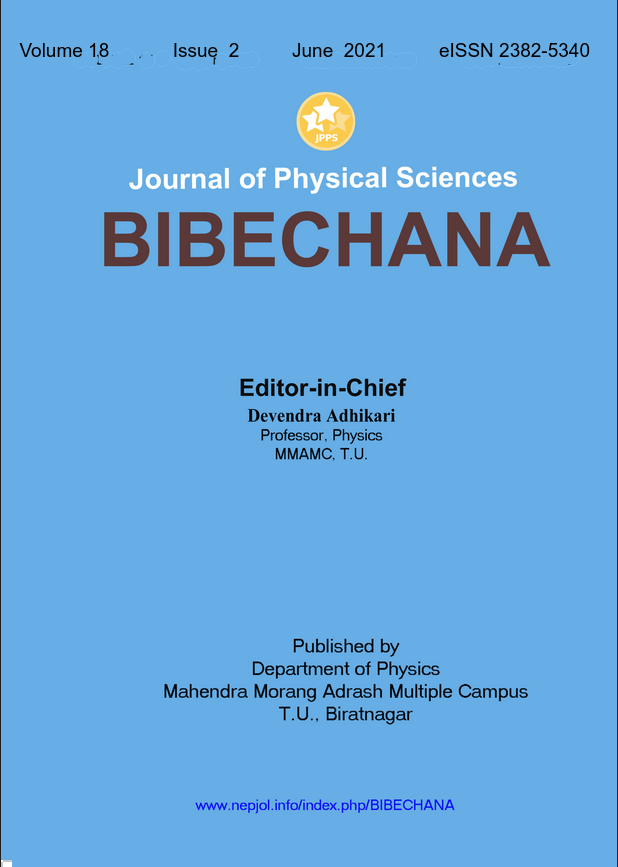Variability of b-value before and after the Gorkha earthquake in the Central Himalaya and Vicinity
DOI:
https://doi.org/10.3126/bibechana.v18i2.31207Keywords:
G-R (Gutenberg Richter) law, b-value, Stress heterogeneity, Gorkha, Central HimalayaAbstract
This study computes the b-value of Gutenberg-Richter relation associated with the 25 April 2015 Gorkha earthquake and its aftershock sequences. For this the homogeneous catalogue of 769 earthquakes that occurred in the Himalayan compressed belt and its vicinity was analyzed by three different approaches. The minimum b-values 0.60±0.07 and 0.63±0.06 were observed for windows containing Gorkha earthquake. For time window before Gorkha earthquake, the b-value was noted as 0.89±0.12. It was noted 0.81±0.04 for time window between Gorkha earthquake and Dolakha earthquake and 0.78±0.08 for time window after Dolakha earthquake. The results revealed the fact that b-value starts to decrease for strong earthquake. About 17% jumps of the b value were observed within 17 days between Gorkha earthquake and its largest aftershock, the Dolakha earthquake. The b-value 1.16±0.09 was obtained for the depth range of 0-10 km, 0.89±0.4 for the depth range 10-20 km and 0.65±0.08 for the depth range of 20-30 km. The results strongly support the global trends of decreasing b-value with depth in the continental crust and subduction zones. The low b-value patch observed in the west of Gorkha from contour map depicts the region as the potential zone of future strong seismic activity.
BIBECHANA 18 (2) (2021) 32-42
Downloads
Downloads
Published
How to Cite
Issue
Section
License
This license enables reusers to distribute, remix, adapt, and build upon the material in any medium or format for noncommercial purposes only, and only so long as attribution is given to the creator.




